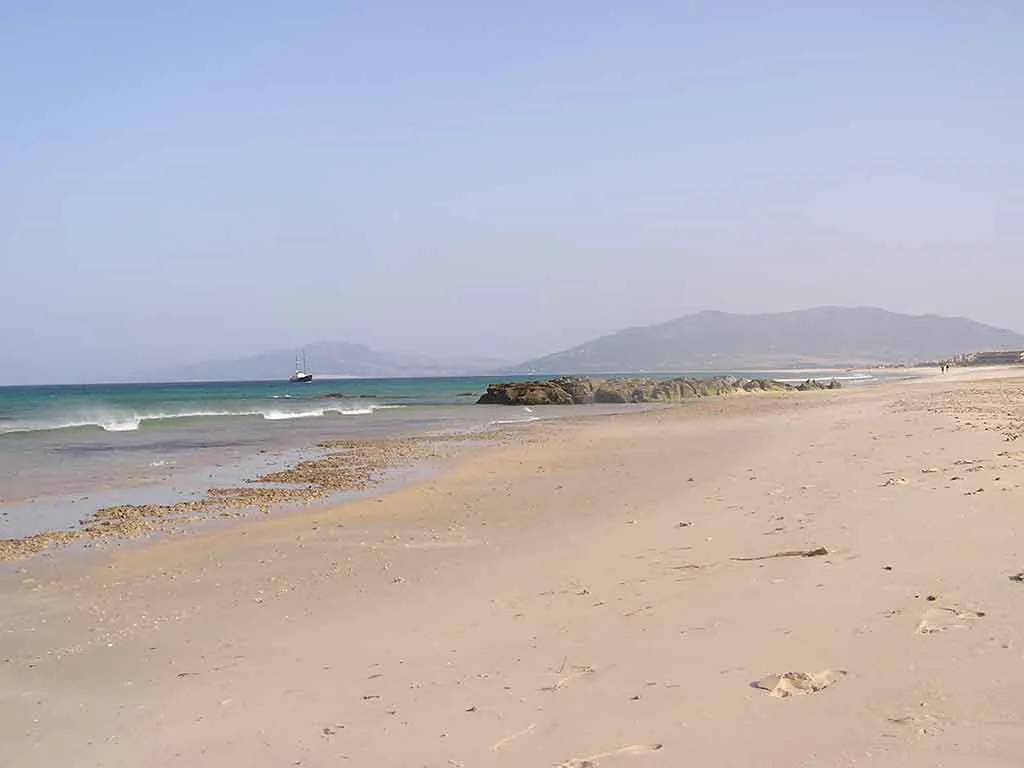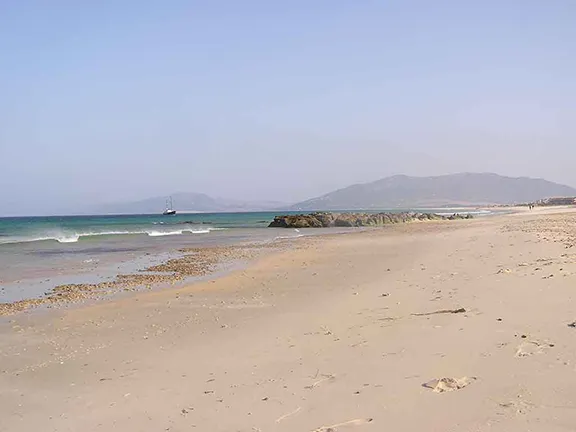Playa de los Lances Paraje Natural consists of a 3 kilometre long beach backed by two lagoons. The area is renowned for its birdlife, particularly in winter.
By Nick Nutter | Updated 22 Sep 2022 | Cádiz | Birdwatching |
Login to add to YOUR Favourites or Read Later


Playa de los Lances
Playa de los Lances Paraje Natural is inside the Del Estrecho Parque Natural just north of Tarifa. The 226 hectares consist of a 3 kilometre long beach backed by two lagoons. The area is renowned for its birdlife, particularly in winter.
The beach is fine white sand backed by low sand dunes with two lagoons behind the dunes, the Jeli and the Montellano formed by two small rivers that run parallel to the beach, the Jara and Vega. The lagoons act as temporary stopping places for many of the migratory birds that make their way across the Gibraltar Strait in spring and autumn. Behind the lagoons, you will find stone pines and Mediterranean scrubland, maquis.
The beach is also notorious for its strong winds that blow in off the Atlantic, making it a favourite location for windsurfing.
The number of bird species that visit the Playa de los Lances is remarkable, the following is a list of the most notable species: Apus caffer (white-rumped swift), Ardea cinerea (gray heron), Bubulcus ibis (cattle egret), Calidris alba (sanderling), Calidris alpina (red backed sandpiper), Charadrius alexandrinus (Kentish plover), Charadrius hiaticula (great plover), Ciconia ciconia (white stork), Circus aeruginosus (marsh harrier), Egretta garzetta (little egret), Himantopus himantopus (black-winged stilt), Larus audouinii (Audouin's gull), Larus fuscus (lesser black-backed gull), Chroicocephalus ridibundus = Larus ridibundus (black-headed gull), Milvus migrans (black kite), Passer domesticus (house sparrow), Plegadis falcinellus (glossy ibis), Pluvialis squatarola (grey plover), Recurvirostra avosetta (avocet), Sterna sandvicensis (sandwich tern)